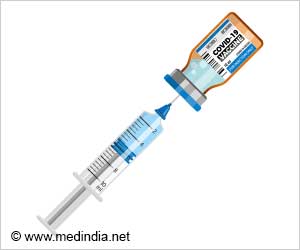
- A new wearable laser device can non-invasively monitor brain blood flow and assess stroke risk
- Research shows the device can distinguish between low and high stroke risk
- The device uses laser technology for affordable and accessible stroke monitoring
Stroke, also known as a brain attack, occurs when the blood flowing to the brain is interrupted (ischemic stroke) or sudden bleeding in the brain (hemorrhagic stroke).
About 15 million people worldwide are affected by stroke every year and it is the second largest cause of death and a leading cause of long-term disability (1✔ ✔Trusted Source
Correlating stroke risk with non-invasive cerebrovascular perfusion dynamics using a portable speckle contrast optical spectroscopy laser device
).
Advertisement
Monitoring Brain Blood Flow for Stroke Risk
Researchers from the California Institute of Technology have developed a new wearable laser-based device that can be used as a non-invasive diagnostic tool to monitor changes in brain blood flow and volume. The device uses physiological markers to assess stroke risk instead of lifestyle risk factors.
“A physician could not tell whether a patient was at risk due to the lack of a cost-effective and measurable stroke risk assessment system.” This new medical approach can diagnose the early signs of increased stroke risk and it can potentially decrease the chances of having stroke and reduce stroke severity.
The research published in the Optics Publishing Group journal Biomedical Optics Express describes that the new wearable stroke monitor uses speckle contrast spectroscopy (SCOS) to track changes in the blood flow and volume during a breath-holding exercise.
Advertisement
Stroke Risk Study Using the Portable Device
The study involved a group of 50 volunteers and is part of a large collaboration led by Yang and Charles Liu from the University of Southern California. The portable system was able to differentiate between low and high stroke risk patients among the volunteers along with the use Cleveland Stroke Risk Calculator.
“This device can be used in the regular testing performed during the annual physical examination in the future, which can help physicians to know more about the patient’s health,” said Liu. “It could be particularly beneficial for the communities with limited access to medical services.
Advertisement
Stroke Risk Monitoring with Portable Spectroscopy
For the past four decades, various research has been done to measure the blood flow in the brain and the subsequent changes associated with stroke risk. Imaging techniques like PET (positron emission tomography), SPECT (single photon emission computed tomography), and CT (computed tomography) can be used to examine the blood flow and volume in the brain. However, these methods are not affordable for the common people and are difficult to install in small clinics.
To address this challenge researchers simplified SCOS as a portable spectroscopy system that is made up of a laser diode and a CMOS-based camera that can be placed on the head with no external optical elements.
How Infrared Laser Tracks Blood Flow in the Brain
The modified spectroscopy works by shining an infrared laser onto the brain. The scattering pattern of the laser is then analyzed. Infrared light can penetrate the skull and brain, producing a back-scattered speckle pattern that varies with changes in blood flow and tissue oxygenation. Then a coherent laser is used to determine the brain blood flow rate by calculating how fast the captured laser field fluctuates, as it increases with faster blood flow.
“As people age their blood vessels get stiffer, making them more prone to stroke,” said Yang. “By asking a person to hold their breath, we can use SCOS to measure how much the blood vessels expand and how much faster blood is flowing within the vessels in response. These reactive measurements indicate vessel stiffness and such measurement capabilities are unique to transcranial optical methods.”
“While the current study is very promising, we are planning additional studies to further understand the clinical implications of the laser SCOS recordings in larger patient groups over longer periods,” said Liu.
Reference:
- Correlating stroke risk with non-invasive cerebrovascular perfusion dynamics using a portable speckle contrast optical spectroscopy laser device – (https://opg.optica.org/boe/fulltext.cfm?uri=boe-15-10-6083&id=560941)
Source-Medindia



